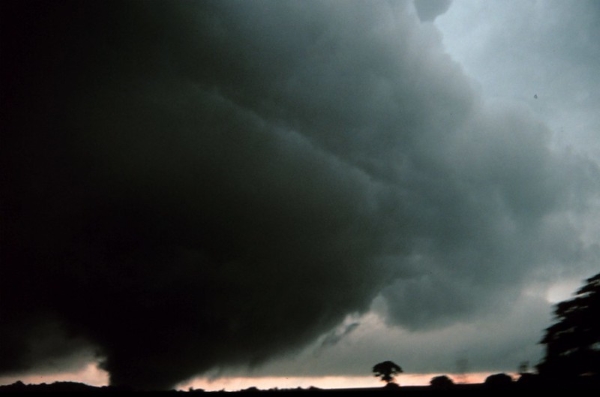
FINE ART INSURANCE 101
Three Insurance Experts Explain the Intricacies of Insuring Your Art Collection
I am often asked by clients if they should cover their art under their homeowner’s insurance (HO) or if they should investigate insuring their art with a separate fine art collectors’ policy. Since I am an art dealer and not an insurance agent, I thought it prudent to do a deep dive into the world of fine art insurance so I could properly advise my clients. As I started to research the subject, I was shocked to discover how little I knew about fine art collector’s insurance and how inadequately most HO policies cover collectibles like fine art. To help others better understand how their art is currently covered, or not covered, I have written this informational post titled, Fine Art Insurance 101.
To research this article, I looked at both homeowners’ and personal inland marine policies, and specialized policies written just for art collectors. I also interviewed an insurance agent who offers homeowners’ insurance, a fine art insurance specialist, and a fine art provider who underwrites fine art policies to learn what is covered, how is it covered, who will pay a claim, and how it will be handled.
To better understand each perspective, I have divided my post into three parts.
Part One:
Is Your Art Adequately Covered by Your Homeowner’s (HO) Insurance?
I called the agent who handles my HO insurance, Connie Butler. Connie is the Personal Lines Manager for Champion Commercial Insurance in Dallas, Texas. She was kind enough to visit with me about how fine art and other collectibles are covered by most HO policies, and ways to improve on the protection they offer. If you have actually read your HO policy front to back and have scheduled your fine art and other collectibles on an attached personal Inland Marine Policy, move on to part two, if you have not done both of these, don’t skip part one!
Part Two:
An Interview with a Fine Art Insurance Specialist
I emailed Houston, Texas based Adrienne Reid, Vice President of one of the largest fine art insurance specialty brokerages in the country, Huntington T. Block, and she was kind enough to answer my many questions about the when, how, and whys of fine art collector’s insurance. Early on in our conversation, Adrienne answered the “When” question by saying “If you can walk around your house and you determine that you have more than 5 artworks that exceed $10,000 each in value, you should consult an agent or firm that specializes in fine art insurance.”
Part Three:
An Interview with a Fine Art Insurance Provider
Most insurance is underwritten by an insurance provider. A provider evaluates the risk, provides a quote, issues coverage, and, in the event of a covered loss, pays the coverage set forth in the policy.
To learn more about the role played by a fine art insurance provider, I emailed Katja Zigerlig, Vice President of Art, Wine + Collectibles Advisory with Berkley One, a Berkley Company that specializes in providing insurance for fine art and collectibles, as well as high-end homes, autos, liability, and watercraft. She and her team were extremely helpful and most generous with their time.
Note: I am not promoting any specific agent or insurance company with this post. I am grateful to and crediting those who gave liberally of their time to advise me, and thankful for the education I received in the process. I hope you find what follows enlightening.
Part One:
Is Your Art Covered by Your HO Insurance?
My first inquiry focused on how a fine art loss was handled by a standard HO policy. To do this, I interviewed the agent who currently handles my HO insurance, Connie Butler. Connie is the Personal Lines Manager for Champion Commercial Insurance in Dallas, Texas.
Soon into the interview, I realized that certain types of personal property, primarily collectibles like fine art, are not normally handled the way I thought. I naively “assumed” that the word “All Risk” meant just that, and all my personal property was covered up to the amount stated on my policy’s declarations page. So, I thought that if I had a policy with a personal property limit of $500,000, and a $25,000 painting was stolen from my home, it would be completely covered, less the deductible of course. I was wrong. I now realize that HO insurance is designed to insure your home, not protect your art collection.

Many of your possessions like clothes, furniture, and appliances are covered, in most cases, by a replacement value. In the event of theft however, other item categories like fine art, jewelry, and furs, have classification limits varying from $500 to $5,000 per category depending on the policy.
To provide more realistic and broader coverage to your valuable personal property items like fine art, your agent will normally offer you another type of policy called a personal Inland Marine Policy, sometimes called a “floater” or “endorsement.” In this type of policy, individual items and their value are listed; the coverage is broader; most claims are handled quicker; and the coverage is usually less expensive than blanket coverage. The following is a synopsis of my interview with Connie:
The most common types of HO policies and how they generally relate to a fine art collector.
Types of HO Policies:
The two types of insurance policies available to a homeowner are “Named Peril” and “All-Risk.” As its name implies, the “Named Peril” policy only covers the perils that are listed in the policy. Of the two, the “All-Risk” policy usually provides broader coverage for a homeowner.
What an All-Risk HO policy covers:
Within the stated dollar limits on a policy’s declarations page, an All-Risk HO insurance policy provides coverage from all risks or perils that could damage your home or its contents and personal property unless the risks are specifically excluded or limited by the policy.
How your personal property is covered by most HO polices:
What is covered:
Most All-Risk HO policies provide blanket coverage for most of your personal property. In the event of any covered loss, a deductible will be applied. How these claims are paid will depend on if your personal property is covered for “Replacement Cost” or by “Actual Cash Value.” In the event of a total loss of an insured item, “Replacement Cost” coverage will replace the item with a new one of equal or like quality, while “Actual Cash Value” coverage will provide the insured a cash payment equal to the item’s depreciated value at the time of the loss.
What is Partially Covered (Special Limits of Liability):
In most All-Risk HO policies, personal property items of a certain type or category are handled differently than the rest of your personal property when it comes to theft or mysterious disappearance. These categories are individually identified in the policy and often include collectibles such as fine art, currency, coins, stamps, and jewelry. The amount of money paid to the insured in the event of this type of loss is capped depending on the category. For instance, the amount of money paid the insured for the theft of one or more artworks that have a total combined value of $20,000 could be as little as $500 depending on the policy. These are items that the Insurance companies want you to schedule separately under an Inland Marine Policy.
Other Types of losses not covered in an HO policy:
Losses typically not covered include damage caused intentionally by the insured, damages caused by lack of proper maintenance, terrorism, nuclear war, damage by smog, bug infestations, rust, mold, general wear and tear, and any other exclusions listed in the policy contract. Also, most all policies will protect the insurance company if it is found that the insured intentionally provided false information to get insurance or while making a claim.
How your agent can provide better coverage for your personal property than your standard HO policy provides:
To protect an insured’s property that is not covered by the standard HO policy, companies normally offer another type of policy called a personal Inland Marine Policy. Attached to this policy is a list provided by the insured of all the property that exceeds the limits of their homeowner’s policy that they want insured and the value they want each item insured for. This type of policy will normally have fewer restrictions than a HO policy and provide more in-depth coverage. If an item on the schedule is lost to an unexcluded risk, the insured will receive the amount of money specified as the items listed value, unless a deductible applies. If the item is damaged and not a total loss, the policy will normally pay for its restoration up to its listed value.
Scheduled Personal Property Insurance is always an “All Risk” policy. This means that it will cover against “… all risk of physical loss or damage to your property described in the schedule of Personal Articles, unless an exclusion applies.” For each item covered, you would normally have to provide your agent with a photograph, a copy of the original purchase receipt, and sometimes an appraisal if you want to list the item for more than was originally paid.
I asked Connie when she thought an insured should add a personal Inland Marine Policy to their HO insurance. Without hesitation, she said that “if you have any personal property valued at $2,500 or more, you should list it separately on a Scheduled Personal Property Policy.” That is the best way of knowing that it is covered properly.
Summary:
Homeowners’ Policy:
Be sure your HO is an “All Risk” “Replacement Cost” policy. It will usually cost a little more but worth it if you have a tornado rip through your home.
To truly understand how your home and possessions are insured, read your entire homeowner’s policy, especially the attached “other coverages” and “endorsements” pages. The “other coverages” and “endorsements” have the power to change coverages in the basic HO policy.
If you have read something in your policy you did not expect or did not understand, call your agent, and get clarification. After a loss is not the time to find out you were not covered for a risk you assumed you were.

According to my agent, it is important to photograph each room showing not only your art but all of your personal property that is visible in the room. (although this may not relate to art, open closets and drawers and photograph what is visible inside.) Categorize images by room and upload the files to the cloud and to several thumb drives that can be kept in a safe deposit box or with a relative. My agent said that if your house is hit with a tornado and your possessions are scattered over the county, you will have a hard time proving to the insurance company that you actually had the items in your claim without photographic evidence.

Inland Marine Policy:
Scheduled Inland Marine Policies are All-Risk and pay the insured the amount listed on the policy or repair the item if a loss occurs that isn’t excluded by the policy.
Any item you own that is kept in your home and is valued over $2,500 should be itemized on a scheduled personal Inland Marine Policy. You can update the value on any item if you can provide your agent with evidence of a greater value. (I recommend that if you do not have a separate policy covering your fine art, that any artwork you have paid over $1,000 for be listed on your Scheduled Personal Property Policy.)
https://fineartestates.com/
No comments:
Post a Comment